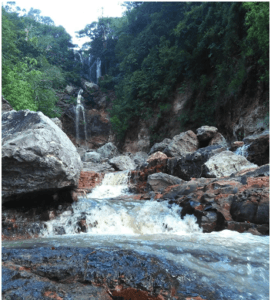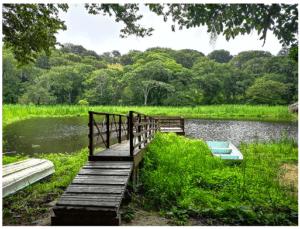 Paris, 10 July 2020 — UNESCO’s Executive Board has approved the designation of 15 new UNESCO Global Geoparks, which brings the number of sites participating in the Global Geoparks Network to 161 in 44 countries.
Paris, 10 July 2020 — UNESCO’s Executive Board has approved the designation of 15 new UNESCO Global Geoparks, which brings the number of sites participating in the Global Geoparks Network to 161 in 44 countries.
UNESCO Global Geoparks are single, unified geographical areas where sites and landscapes of international geological significance are managed with a holistic concept of protection, education and sustainable development. Their bottom-up approach of combining conservation with sustainable development while involving local communities is becoming increasingly popular. At present, there are 161 UNESCO Global Geoparks in 44 countries. A webpage of each UNESCO Global Geopark is available, with detailed information on each site.
UNESCO’s work with geoparks began in 2001. In 2004, 17 European and 8 Chinese geoparks came together at UNESCO headquarters in Paris to form the Global Geoparks Network (GGN) where national geological heritage initiatives contribute to and benefit from their membership of a global network of exchange and cooperation.
On 17 November 2015, the 195 Member States of UNESCO ratified the creation of a new label, the UNESCO Global Geoparks, during the 38th General Conference of the Organisation. This expresses governmental recognition of the importance of managing outstanding geological sites and landscapes in a holistic manner.
The Organisation supports Member States’ efforts to establish UNESCO Global Geoparks all around the world, in close collaboration with the Global Geoparks Network.
On 10th July 2020, UNESCO Global Geoparks were designated for the first time in Nicaragua, the Russian Federation and Serbia. A description of the Río Coco Global Geopark is given below.
 Located in the north of Nicaragua, Río Coco is part of the volcanic Central Mountainous Chain featuring a landscape of rolling hills and plains with small valleys. The elevated and broken topography of the area offers lookout points and panoramic views of a range of ongoing tectonic phenomena, in a landscape of wetlands, highland springs and cloud forests. The territory is home to three emblematic trees: the almond tree of ‘Tere Armijo’, the Branded Guapino tree, and the 500-year-old Golden Ceiba, sacred for the Mayan people. The area has a rich history, marked by Taguzgalpa heritage, with numerous pre-Hispanic settlements and a few examples of cave art. Spanish conquistadors established the Cuje gold mines in Río Coco and built the parish church of Santa María de Magdalena in Totogalpa (18th and 19th centuries).
Located in the north of Nicaragua, Río Coco is part of the volcanic Central Mountainous Chain featuring a landscape of rolling hills and plains with small valleys. The elevated and broken topography of the area offers lookout points and panoramic views of a range of ongoing tectonic phenomena, in a landscape of wetlands, highland springs and cloud forests. The territory is home to three emblematic trees: the almond tree of ‘Tere Armijo’, the Branded Guapino tree, and the 500-year-old Golden Ceiba, sacred for the Mayan people. The area has a rich history, marked by Taguzgalpa heritage, with numerous pre-Hispanic settlements and a few examples of cave art. Spanish conquistadors established the Cuje gold mines in Río Coco and built the parish church of Santa María de Magdalena in Totogalpa (18th and 19th centuries).